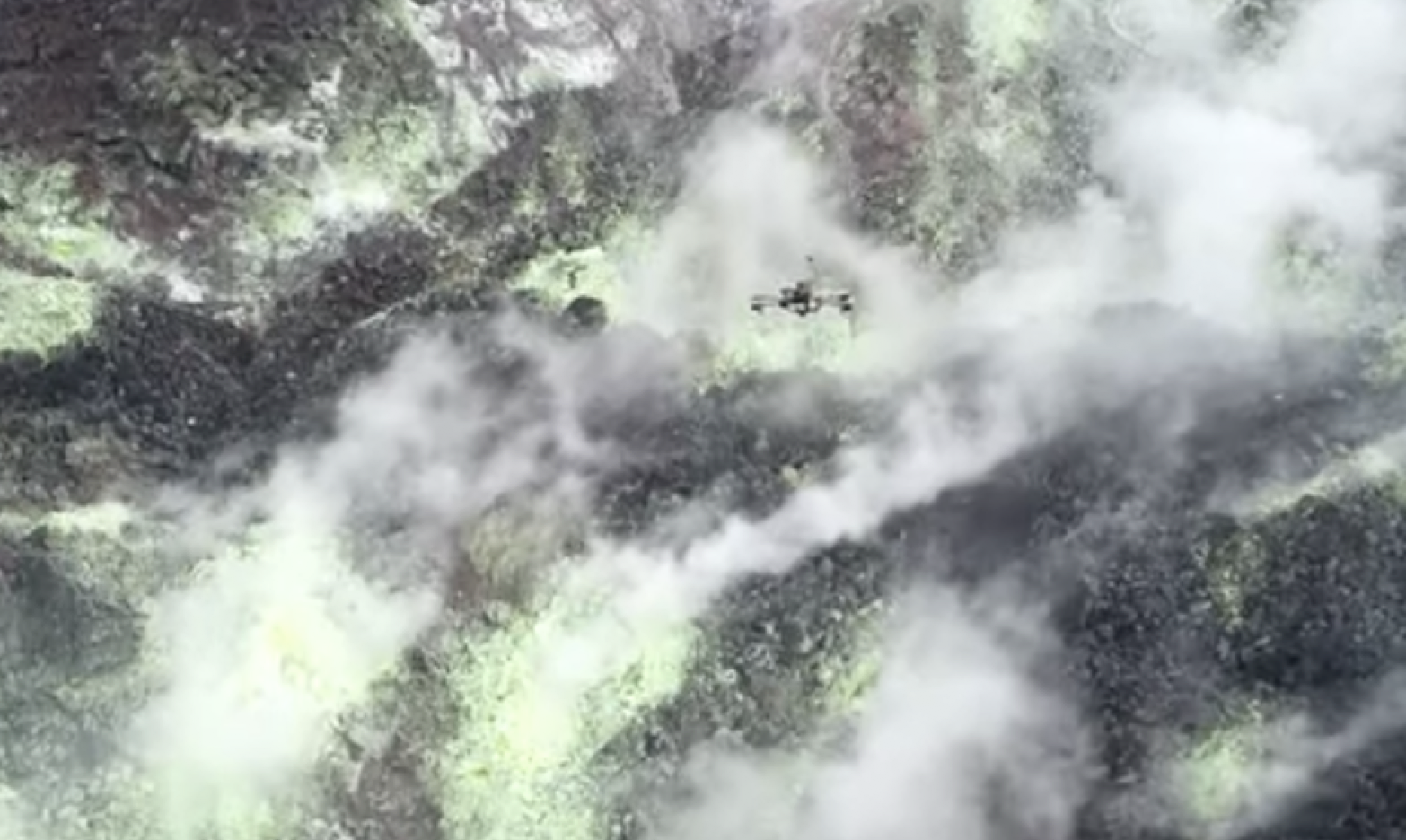Recent News
UNM Engineering names Prabhakar inaugural Cleve Moler and MathWorks Endowed Chair
October 3, 2025
Computer scientist wins Athlete of the Year Award for adaptive skiing technique
May 29, 2025
Hand and Machine Lab wins 2 awards at CHI conference
May 15, 2025
News Archives
UNM drones study dangerous volcano plumes in Papua New Guinea
July 3, 2019

Active volcanoes, and the composition of the gasses coming from them, provide valuable clues as to what is happening deep beneath, but gathering this critical data can be extremely hazardous to the scientists involved.
Now, a team from The University of New Mexico has joined an expedition led by Emma Liu of the University of Cambridge and supported by the Deep Carbon Observatory to test whether robotic drones could be used to reduce the risks of gathering volcanic samples.
Exploring beneath the surface is valuable because it is possible to predict when an active volcano will erupt causing widespread damage, as happened at Tavurvur volcano in Papua New Guinea in 1994 and 2014, said Matthew Fricke, a research assistant professor at the UNM Department of Computer Science, and part of the drone team on the project.
Drones are seen as a viable solution to studying this landscape. Tavurvur volcanos are wreathed in noxious gasses such as sulphur dioxide, and the landscape is a jumbled mass of smashed razor-sharp rocks. Plus, geologically unstable ground close to volcanos is prone to rockfalls and collapsing sinkholes. Sampling the gasses from the plumes of volcanos using small piloted aircraft is also dangerous as pilots attempt to keep their engines from being choked with ash. All of this equals a life-threatening situation for researchers.
Ultimately UNM computer scientists hope to program swarms of drones so they work together to map the gas concentrations around volcanos and to discover the richest places to sample. Writing code to allow drones to autonomously and collaboratively survey volcano gasses allows small, local monitoring stations to keep an eye on volcanoes, rather than having to rely teams of drone pilots.
Fricke said the team just completed a three-week mission to Tavurvur and Manam volcanos in Papua New Guinea. These volcanos lie on the Pacific “Ring of Fire.” Drones were employed to place sensors in the crater of Tavurvur and sample gasses from multiple towering plumes. During the expedition, a 7.5 earthquake caused the team to evacuate their hotel in the middle of the night, underscoring the danger of working in geologic hotspots. During the expedition, two drones were lost to the volcano, but the drones can be replaced, unlike human life, Fricke said.
The UNM team consisted of Fricke, in addition to Tobias Fischer and Scott Nowicki, both professors in the Department of Earth and Planetary Sciences; and computer science undergraduate Jarett Jones.
